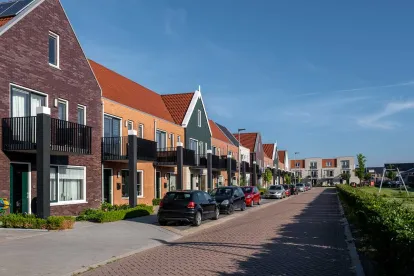The future looks bright for the commercial real estate (CRE) market in Charlotte, North Carolina. The Sun Belt city, like all municipalities throughout the country, felt the early economic shock waves from the Covid-19 pandemic and faced uncertainty in the CRE industry. However, bolstered by pre-pandemic momentum, Charlotte's market managed to see surges and is poised for further gains in 2022.
Even as Charlotte has proven resilient to various external forces, other cities have not fared as well. And while the country seemingly has started to climb out of the global health crisis, headwinds continue to loom – the Russia-Ukraine crisis, additional Covid-19 variants, ongoing supply chain disruptions, labor supply shortages, and rising inflation that has prompted the Federal Reserve to start raising rates. These major events are affecting the outlook for CRE markets, and in the case of certain cities, they could defer or diminish demand in select property sectors.
As CRE markets continue to recover from the economic impact of the pandemic, an analysis of Charlotte offers further insight on some drivers of demand. During an event co-hosted by Katten and commercial real estate services firm Cushman & Wakefield, several real estate thought leaders discussed activity and emerging development trends in Charlotte's market. Rebecca Rockey, Global Head of Economic Analysis and Forecasting for Cushman & Wakefield, also offered a general outlook for CRE markets, and in particular, the performance of property sectors in Charlotte and factors propelling the growth of the city's CRE market.
This article highlights select observations offered during the event and notes key takeaways regarding ever-evolving CRE markets.
-
Factors Fanning Charlotte's Commercial Real Estate Market
According to Rockey's analysis, several forces have benefitted Charlotte's CRE market and will continue to drive demand for space in the region. Net migration into Charlotte decelerated in 2020 and 2021 on the heels of shifting domestic migration patterns across the country and decreasing international migration into the city. However, projections indicate that there will be migration gains in 2022, including the expectation of a robust trend of immigration contributing to the city's population growth. Charlotte's CRE market is also bolstered by demographic tailwinds that are bringing in new residents with greater education and higher incomes, which in turn will further fuel economic activity in the region.
The post-pandemic wave of young adults leaving their parents' homes has also contributed to strong performance in Charlotte's multifamily space. At a national level, over one-half of individuals in their twenties lived with their parents during the Covid-19 pandemic, which outpaced the number of young adults returning to their parents' homes during the World Wars and the Great Depression. While that pandemic-induced trend triggered negative household formation, the exodus of young adults from their family homes has resulted in a swell of renters across the country and in Charlotte.
Likewise, Charlotte's growing workforce is expected to continue driving CRE development. Charlotte has experienced a full labor market recovery and surpassed pre-pandemic employment levels, with a forecast of ongoing labor supply improvements through both the participation rate and population growth. Various labor sectors have rebounded at different rates with the leisure and hospitality sectors underperforming and the office, industrial and retail sectors performing well. The acceleration of Charlotte's overall labor market should translate into increasing demand for CRE properties.
Key Takeaways: Numerous dynamics, on both macro and micro levels, are affecting the short-term and long-term outlook for CRE markets. Fast-growing and business-friendly secondary markets, like Charlotte, are bouncing back from the economic slowdown induced by the Covid-19 pandemic and appear to be prime for CRE investment.
-
Positive Signs for Several Property Types in Charlotte
Offering an overview of various property sectors in Charlotte, Rockey's outlook indicates that the multifamily and industrial sectors have been and will continue to be CRE darlings. The office sector, on the other hand, has been subject to waning demand and greater uncertainty. However, the forecast for office space is not entirely negative.
Multifamily
Aligning with a general trend nation-wide, Charlotte's multifamily sector maintained a remarkable pace during 2021 and is positioned for several more positive years as the demand rate continues to exceed the city's normal rate. Multifamily vacancy has dipped as low as 2.9 percent in Charlotte and effective rent growth was between 17 and 19 percent for the last two years. Such numbers are unsustainable, however, and could eventually destroy demand by pricing renters out of the tight market. But much-needed supply is ramping up and vacancy rates are expected to rise by the end of 2022 and going forward in Charlotte. Notwithstanding, with compound annual growth rate, it is projected that there will be about 5 percent rent growth annually for the next five years even as the multifamily market softens with the incoming supply.
Industrial
With a nation-wide trend of booming industrial demand, absorption exceeded 500 million square feet across the country in 2021 and is expected to remain at elevated levels above 400 million square feet for the next couple years. E-commerce accounted for a significant portion of industrial absorption and likely will continue to drive elevated demand. Vacancy, which has never been lower, is projected to dip lower in 2022 and then start trending back up – but still remain under 4 percent.
Charlotte's industrial vacancy rate, which was as low as 3.8 percent during the pandemic, is expected to climb above 4 percent but fall short of 5 percent for the foreseeable future. The difference between the national rate and Charlotte's rate can be explained by the fact that Charlotte is a market where industrial development can occur and inventory can be brought to the marketplace. It is expected that a higher percentage of Charlotte's inventory will be absorbed in the next couple years as compared to the nation's absorption rate.
Office
The office sector, across the country and in Charlotte, has not experienced the same demand surge as in the multifamily and industrial sectors. As a remote workforce has altered the way tenants think about office space, demand has decreased and vacancy rates have increased. But some markets, such as Charlotte, are starting to turn the tide.
Charlotte has already surpassed pre-Covid levels of office employment by 4 percentage points, with the expectation that it will increase to 10 percent by the end of 2023. Further, Charlotte was one of the few markets with positive absorption in 2021. The expectation is that Charlotte's office vacancy rate will continue to increase and likely crest in 2022, followed by a decreasing rate in 2023. Charlotte's increase in vacancy, which has been one of the most substantial in the country, is due to supply. So much product is flowing into Charlotte's market at a time when demand is not matching the supply, but the city's labor market and demographic tailwinds will bring in the needed demand.
Key Takeaways: Multifamily and industrial continue to be safe sectors. There is concern that rent rates will become unsustainable, and particularly in the industrial sector, occupiers and tenants should be prepared for sticker shock. In the office sector, the work-from-home environment does not necessarily mean that demand will not be positive and many markets will start to see accelerations in leasing activity.
-
Multifamily Properties Are Getting the Hospitality Treatment
In and beyond Charlotte, hospitality features in the form of high-end amenities and services are becoming more commonplace in multifamily developments. Prior to the Covid-19 pandemic, and especially in the wake of the global health crisis, developers across the country have been placing greater emphasis on incorporating outdoor space in multifamily properties. The shift to work-from-home settings also has elevated emphasis on installing and modifying in-unit amenities to facilitate greater well-being, comfort and flexibility in spaces. Communal spaces likewise are receiving face lifts, such as the addition of individual phone rooms in club houses.
Technological tools are increasingly appearing in multifamily developments to serve both marketing objectives and management needs. For example, with greater penetration of e-commerce, developers are incorporating technology to manage the wave of packages delivered on a daily basis. Further, technology is transforming the way multifamily properties are operated through tools such as property management and revenue management systems.
Key Takeaways: Owners and operators of multifamily properties should stay abreast of amenities and services that could attract and retain occupants. Whether constructing new developments or renovating older ones, adopting a hospitality mindset will assist in creating communities where people wish to reside.
-
Other Industries Are Fueling Demand in the Industrial Property Sector
The expansion of e-commerce is reshaping the industrial property sector in Charlotte's market and other CRE markets. Retailers, primarily large name brands, have pushed for more warehouse space to store products. And as digital sales soared during the Covid-19 pandemic and supply chains were increasingly subject to global strains, retailers secured more industrial space to store products closer to their end-users to ensure swift service.
Partly feeding into the higher absorption rates and lower vacancy rates is the growing fear among retailers and third-party logistics firms of not having sufficient space. This overriding concern has triggered a larger trend of tenants securing more space than they currently need. Third-party logistics firms, for example, are increasingly committing to more space than is required under a contract because they have confidence that the excess space will be filled. However, the consequence is less supply and fewer opportunities for other users in the sector.
Manufacturing activity is also contributing to the momentum in the industrial property sector. Manufacturers' needs range from warehouse storage for their products to industrial space for their suppliers. In regions where manufacturing is increasingly driving the local economies, such as in North Carolina, the industrial property sector will continue to receive a boost from the manufacturing boom.
Key Takeaways: Markets are seeing a link between the boom of select industries and the expansion of industrial properties. E-commerce will continue to contribute to the soaring demand for warehouse space across the country. As certain cities attract industrial activities, there will be a correlating demand for industrial property to accommodate those activities.





 />i
/>i

